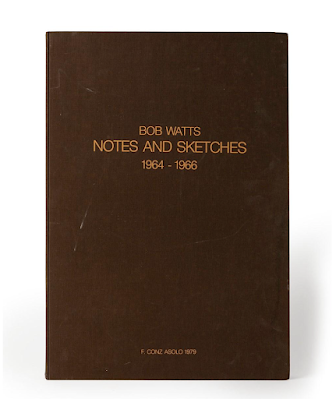Michael Nyman
Decay Music
London, UK: Obscure/Island Records, 1976
12” vinly LP, 49:53
Edition size unknown
Decay Music is the first LP release by the critic/composer who would go on to write operas1 and score countless films2, including a best selling soundtrack album, for Jane Campion's Oscar winning film The Piano.
Produced by Brian Eno, as the sixth release on his Obscure label (use the hashtag below to see the first five), Nyman's album features two tracks, one per side. Both are built around the concept of decay. The b-side is a fairly slight work called "Bell Set No.1". The A-side is a beautiful piece titled "1-100". The simple premise is that there are a hundred chords and the performers cannot play the next until he can no longer hear the previous. I was happy to think about the work, without hearing it, for years.
Gavin Bryars, who (along with Nyman) assisted Eno in the selection of material for the label, was not a fan of Decay Music:
"The Obscure album he did is incredibly trivial, just him playing through these chords . . . Nyman started writing music because he worked with Steve Reich as a kind of agent and he saw that with Steve’s stuff, you play a little cell then play it over and over again, changing it a bit as you go, and a lot of people come and hear it and say, “Great!”’
Almost thirty years after its first release the recording was issued on compact disk, to coincide with the composer's 60th birthday, in 2004. As a bonus track, the original full-speed recording of "1-100" is included.
"It was called Decay Music, which was produced by Brian Eno. Brian was brilliant. He persuaded Polydor that he should produce – or curate, as we would call it now – a label of what was still called “experimental music.” I think there are ten releases from 1975 to about 1978.
At that time, I’d written precisely two pieces of music. I played him one piece called “Bell Set No. 1,” which is a kind of fake Steve Reich percussion equivalent for four organs. We recorded that and Brian said, “I’d put this as the B-side of someone else’s album.” I said, “I want the whole album to myself.” He said, “What else do you have?” I said, “I have this piece called ‘1 – 100,’” which was the soundtrack to my very first [Peter] Greenaway film.
It was a solo piano piece where you sustain a hundred chords running from the top of the piano to the bottom of the piano. When the sound has died away, you play the next chord. It’s an old Morton Feldman idea. So, we recorded it. Lasted about 18 minutes and Brian said, “Is that it?” I said, “Yes,” and he said, “Well, that’s not very interesting,” and I said, “Well, I have this idea,” which I came up with on the spur of the moment. I said, “Let’s play four versions of the piece simultaneously,” so they all existed on their kind of own time and space and there’s a lot of overlapping of chords.
After I was done, something really fascinating happened. Brian sent me a dub or copy of the recording to check over. I put this 7-inch reel on it and started listening to it. I really enjoyed the mix of the piece, and listened for 15, 20, 25 minutes and I thought, “What’s happening? This is an 18-minute piece and I’m still listening to it at 30 minutes.”
I realized that I was listening to it at half-speed, and it sounded fantastic. I immediately rang Brian and said, “Look, I have accidentally created a sound world that we didn’t intend and we have to release this piece. Play it at half-speed!”"
- Michael Nyman
1. Nyman’s operas include The Man Who Mistook His Wife For a Hat (1986), Facing Goya (2000), Letters, Riddles and Writs (1991), Love Counts (2005) and the never-completed Tristam Shandy, based on his favorite novel, The Life and Opinions of Tristram Shandy, Gentleman, by Laurence Sterne.
2. His film scores include The Ogre (1996), Man on Wire (2008), The Libertine (2005), The Claim (2000), Ravenous (1999), The End of the Affair (1999) and numerous others. He has collaborated extensively with Michael Winterbottom and Peter Greenaway.



















































